When some underpowered car is upgraded with a suitably powerful engine, it’s very common to hear people say it “finally got the engine that it deserved in the first place.” But what about situations where it’s the other way around?
I’m talking about those rare but not unheard of situations where an engine somehow got placed into a car that simply couldn’t take advantage of it. One of the most memorable upside-down “wrong engine” scenarios involves the turbocharged V6 monster mill that was initially used in the Buick Grand National.
When that personal luxury coupe finally died in 1987, the GN motor sat unused for a spell, but it came back with a vengeance in the car we’ll explore for this week’s Pontiac Pthursday: the 20th Anniversary Trans Am.
Darth Vader’s Personal Luxury Car
Almost forty years on, it’s still near impossible to believe that a car like the Grand National ever existed. What started as a skunkworks after-hours project involving a group of Boy Scouts with a GM engineer leader turned into a production turbocharged engine that gave malaise-era Buicks a performance boost with an eye towards fuel economy. Then, while almost nobody was looking, this turbocharged V6 slowly gained more power over each consecutive year. By the mid-1980s, it had become a powerhouse and outgrew the milquetoast family two-door it was put into, much like The Incredible Hulk pressing the limits of his pants. The whole “economy” part of the equation was gone, and now the focus was purely “how much can we actually get out of this 3.8-liter V6 if we pull out all of the stops?” The answer was output so high that Buick had to flat-out lie about how much power it really made.

The GN (and even-more-powerful GNX) was an incredibly badass ride and a riot of a sleeper. Don’t get me wrong: it’s an awesome, enigmatic classic, but if we’re being honest, it wasn’t what you’d call an outstanding all-around driving package. The new-for-1978 A-body Buick Regal was a great car that I’d recommend to someone in the eighties who wanted reliable, comfortable transportation. But is it a car I’d put a 300-plus horsepower motor into? With the Regal’s grandma-grade steering, brakes, and suspension? Forget it.

No, the Buick Turbo motor needed to find a new and more agile home, and for GM that meant a limited number of options at the time. The Fiero was about to go to Pontiac Heaven in 1988, so don’t get any ideas there. A V6 in any form was never going to live under the hood of any ‘Vette, so that left the General’s primary big sport coupes: the F-Body Chevy Camaro and Pontiac Firebird. GM would choose the latter, and this time they were going to make a turbo ‘Bird right.
I Wish It Were Painted Black, Though
You see, Pontiac had made a turbocharged Trans Am before: the rather disappointing 1980-81 model that replaced the much-loved W72 400 V8 with a less-than-great blown 301 V8. The chicken on the hood breathed fire onto a scoop festooned with Fisher-Price-like “TURBO” lights, but the motor failed to deliver on its promise to give 6.6-liter performance with 4.9-liter economy.
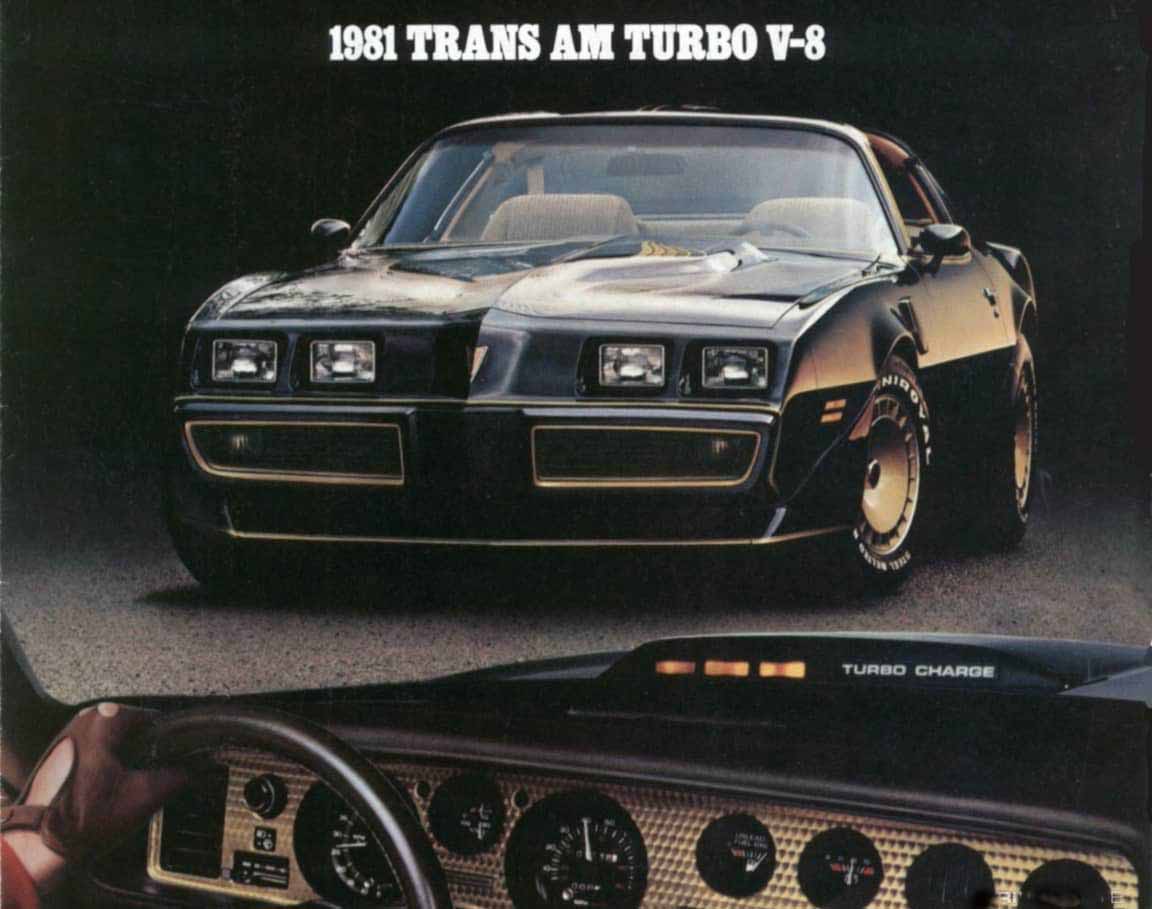
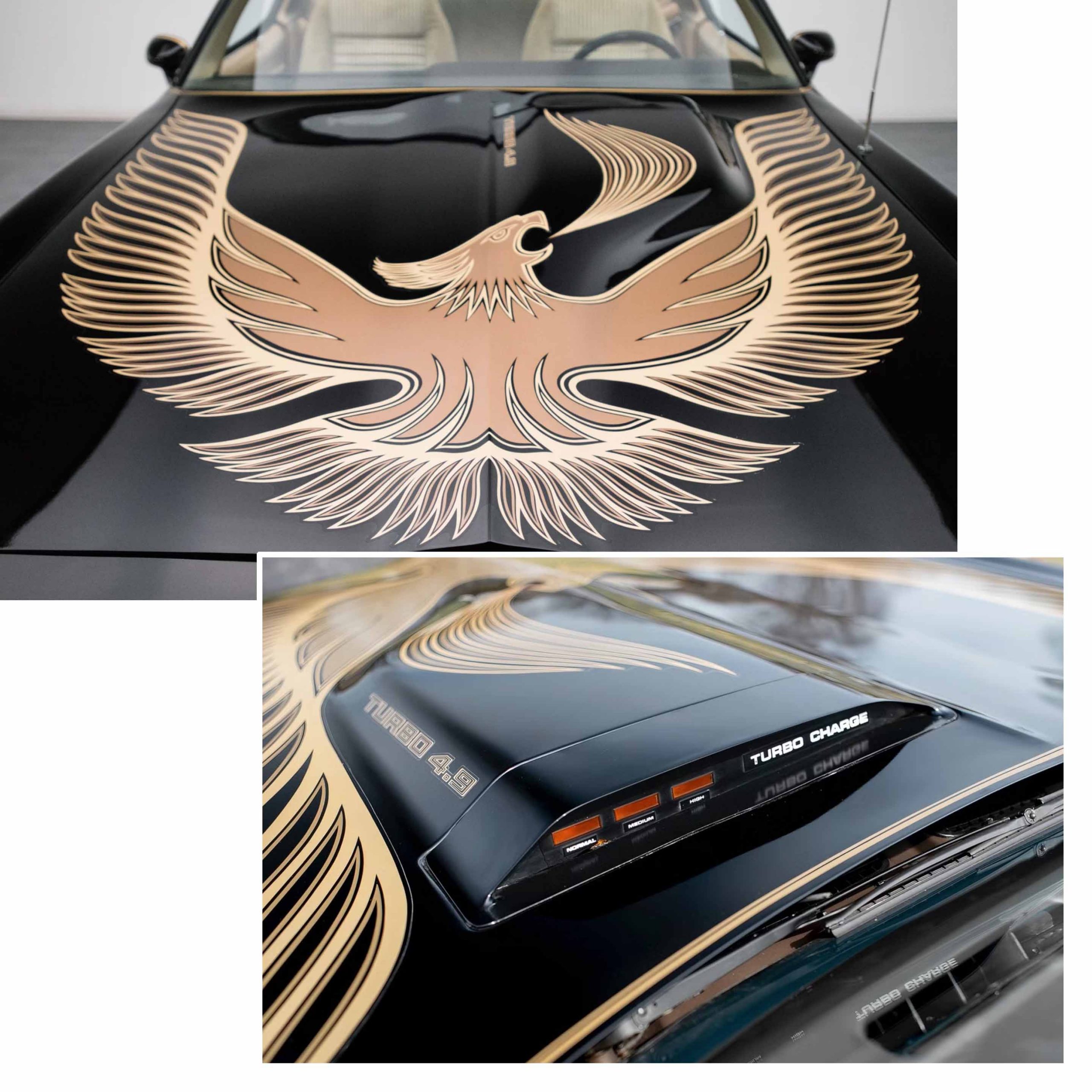
Still, the idea of a turbocharged Trans Am was a good one. As luck would have it, the Trans Am was about to celebrate twenty years of being the hot Firebird as the ’80s drew to a close, and an invitation to pace that year’s Indianapolis 500 meant the great turbo-six found a place to stay. Conversion of the standard Trans Am to turbo power was done by an outside firm called PAS Incorporated, and a mere 1500 of these 20th Anniversary models were planned. Inevitably, it would become something that certain collectors would purchase, put into a car cocoon, and never touch again.
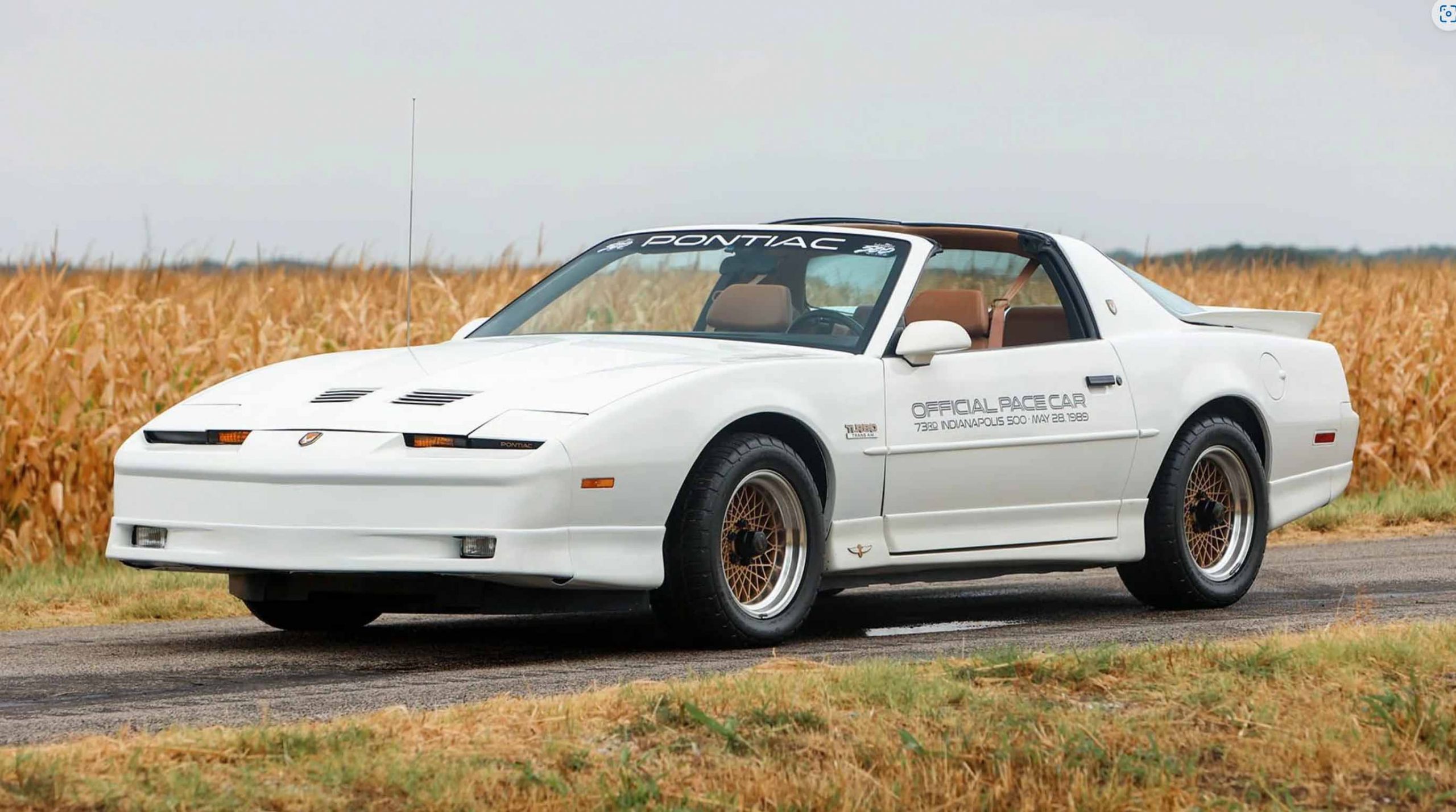
That’s a shame, because the 20Th Anniversary T/A was something to behold out on the road. The new-for-1982 Firebird shape still looked fresh, and despite being a “Special Edition,” Pontiac avoided putting a massive screaming chicken on the hood or outrageous graphics onto what was essentially a loaded GTA ‘Bird. While I love the early bowling-ball wheel covers of the “KITT” Trans Am, the later GTA with bigger tires and subtle body mods might be my favorite – though I’d prefer to forgo the mandatory white finish of all 20th Anniversary cars in favor of black, or even Dwight Schrute maroon. “Indianapolis Pace Car” door and “PONTIAC” windshield decals were shipped with the car to be added at the owner’s discretion; thankfully, a fair number of buyers realized that it needed those stupid stickers like Emma Stone needs an additional left ear.
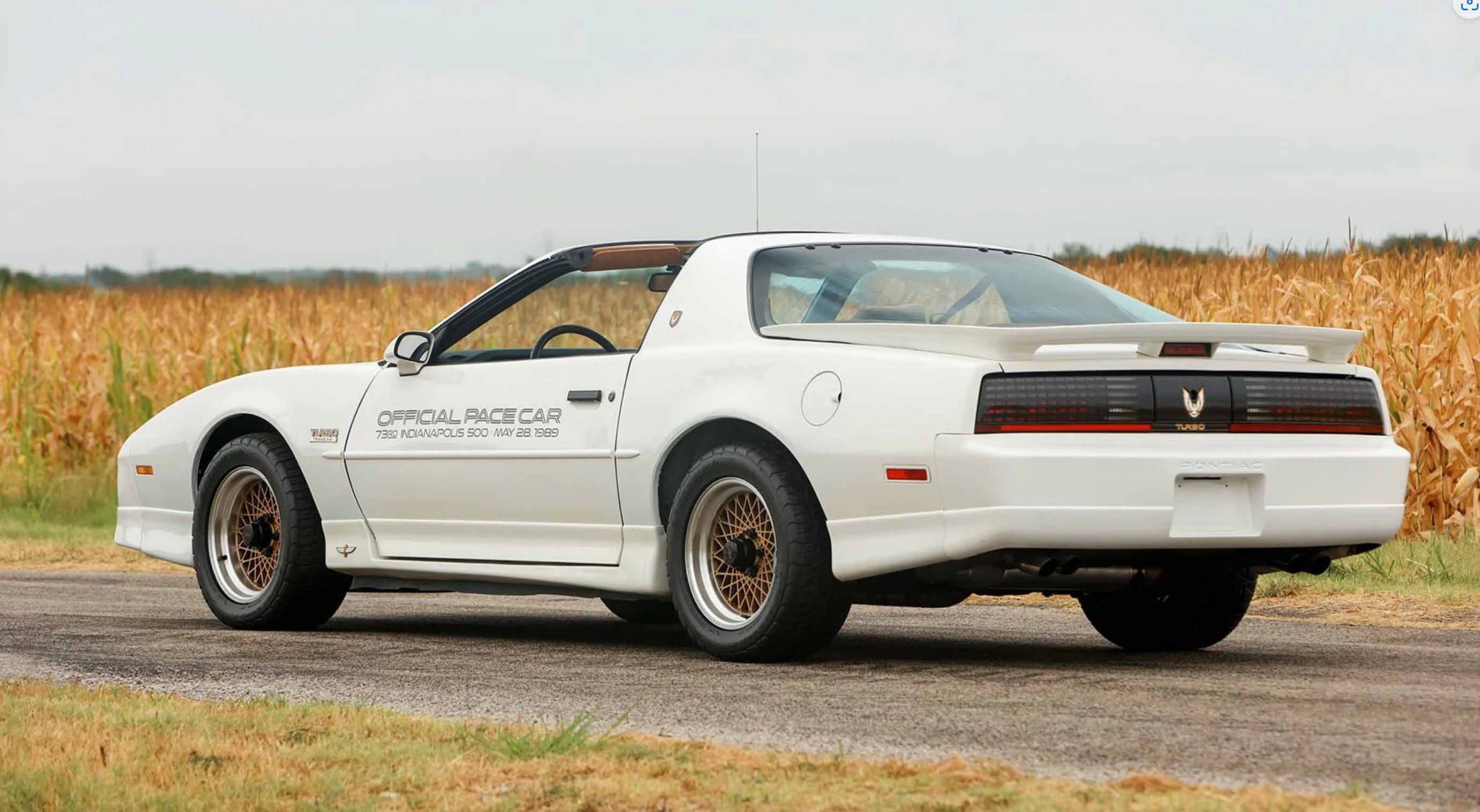
Notably, Pontiac never officially called it this TA the “Turbo,” according to the car’s promotional materials and any literature I’ve encountered. Maybe that was to hide the whole Grand National lineage or any connection with the previous Trans Am Turbo, which had TURBO plastered over every square inch. Either way, that downplaying of the legendary motor only adds to the mystique of the 20th Anniversary Edition.
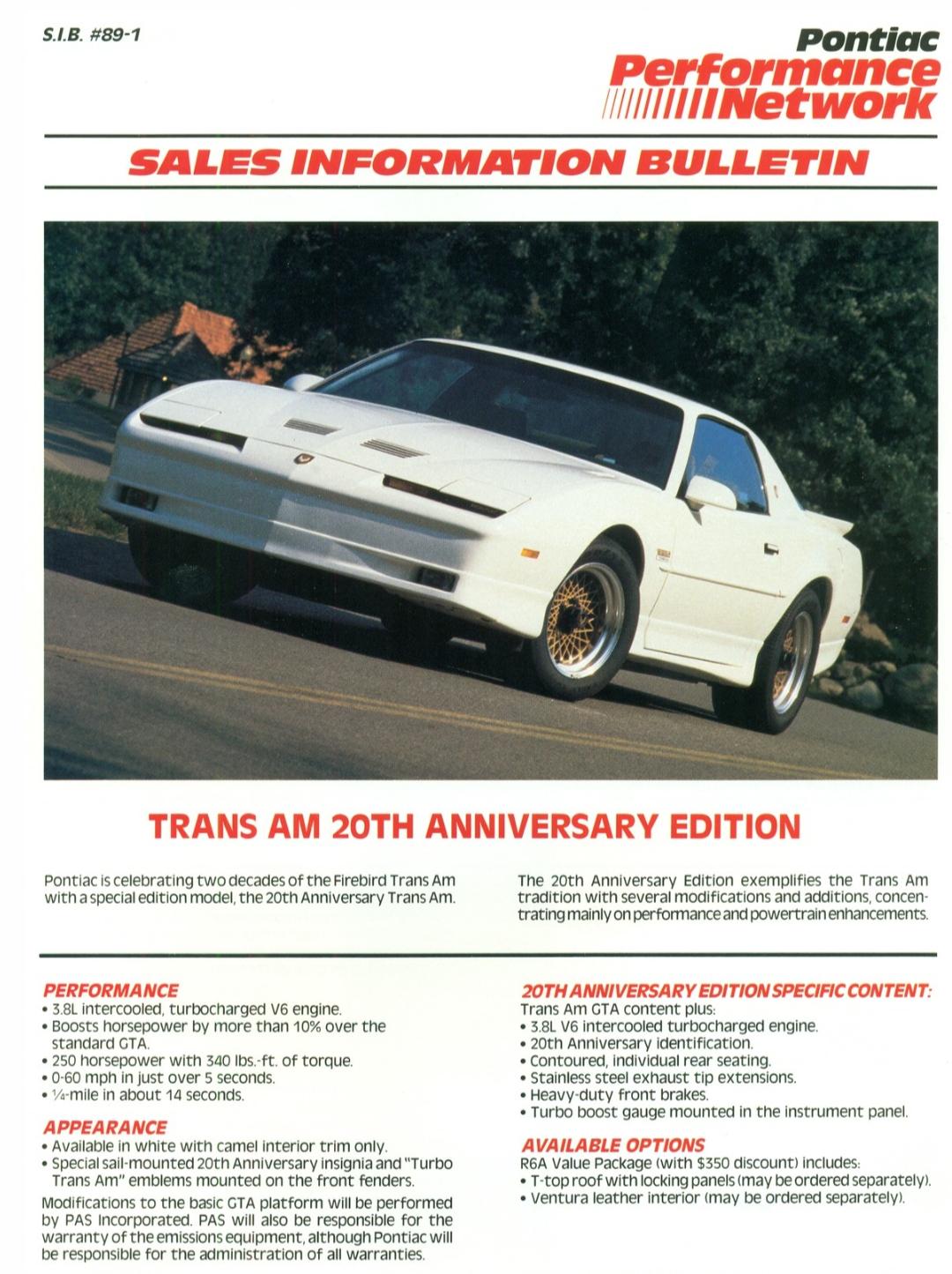

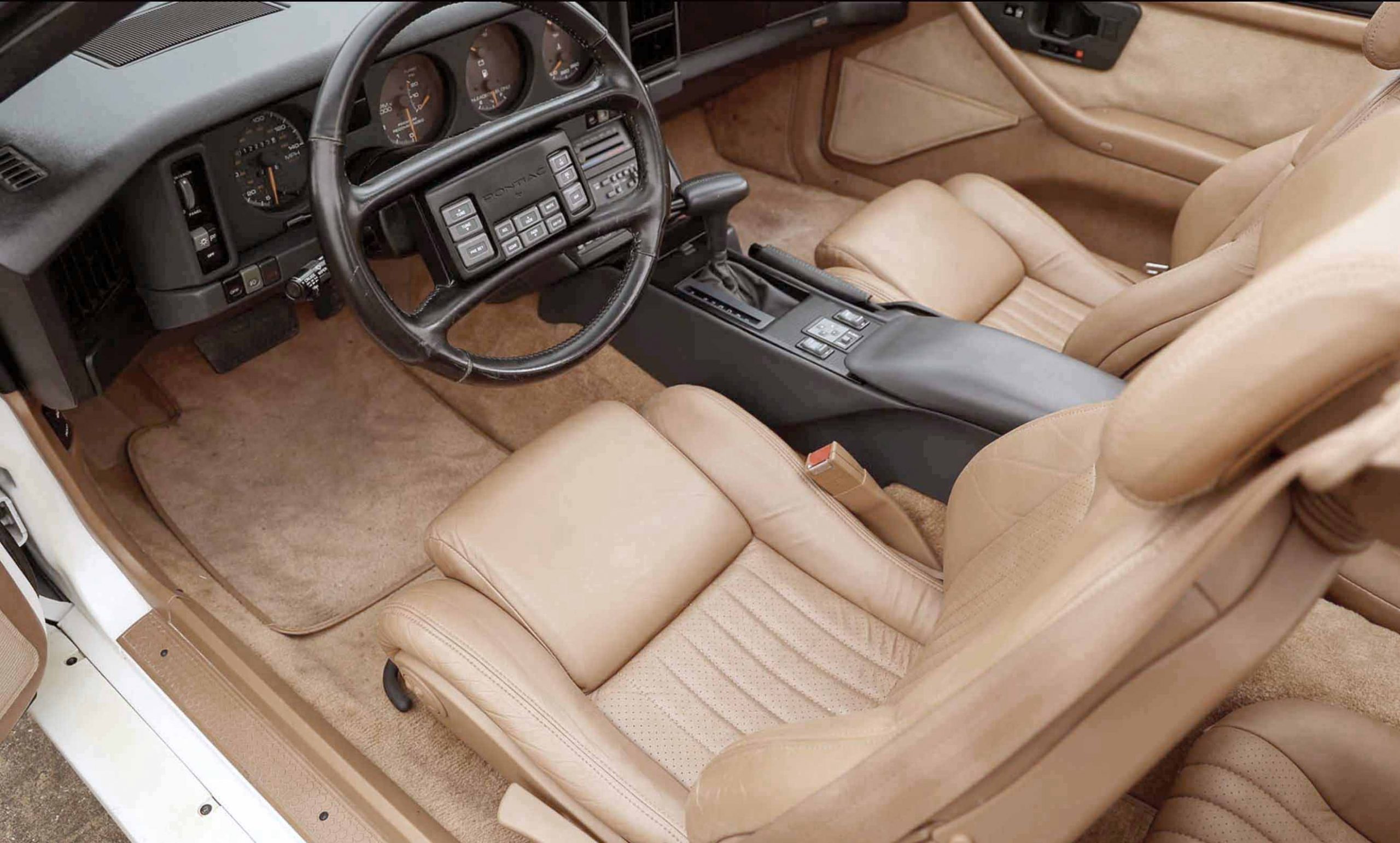
The top-of-the-line Trans Am GTA included rather complex multi-adjustable seats, a full set of analog gauges, and plenty of steering-wheel buttons. The rear seatback folded down to give extra cargo space, but the third-generation F-body design with the protruding “box” for the axle meant you’d end up with a sort of mountain-range-looking area that’s less useable than you might first think (I like how some models had a flip-up cover over the rear “pit” to at least level that area out).

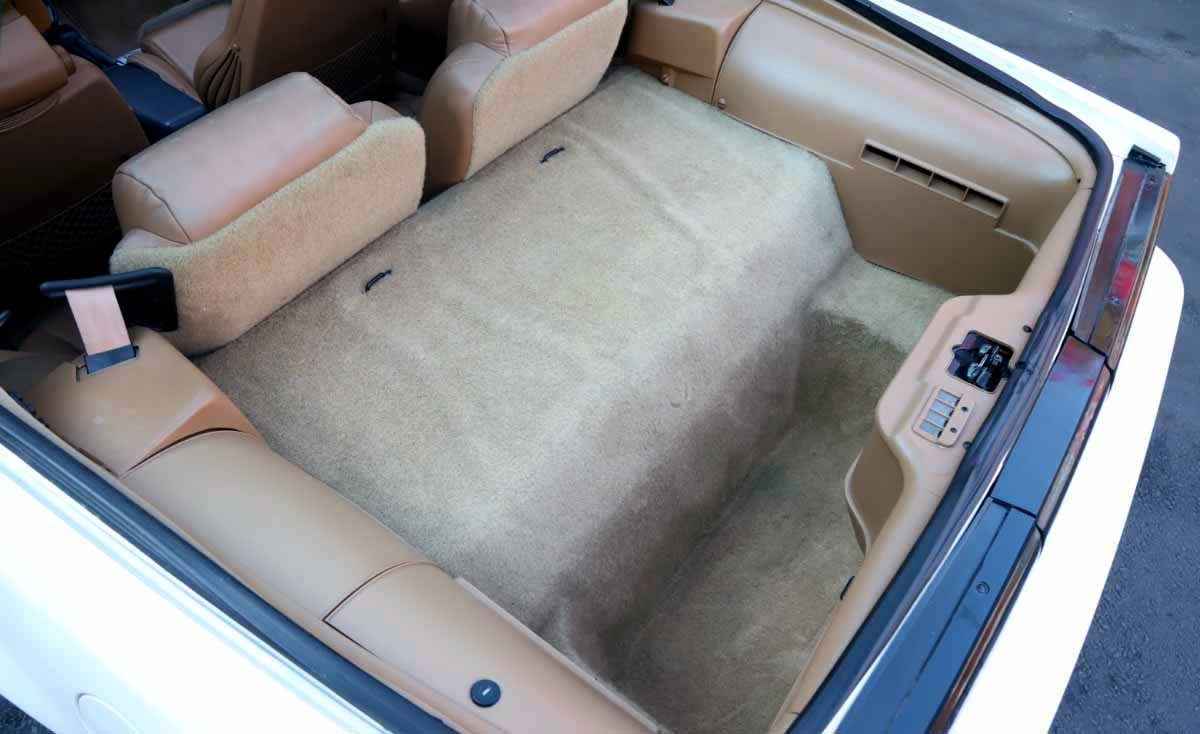
Even without the turbo motor, this was one of the most desirable F-bodies ever, and the engine just added to the exclusivity. Well, exclusivity and a bit more performance. Well, actually a lot more performance.
A Chicken Would Have Blown Off The Hood, Anyway
Bear in mind, the turbo V6 as used in this Trans Am was not exactly a duplicate of the one in the last Buick coupes. With the Firebird’s narrower engine bay, different cylinder heads and exhaust headers had to be added, changes that thankfully increased the motor’s already impressive power figures. Check out the makeshift heat shielding needed under the hood for anything near that red-hot turbo:
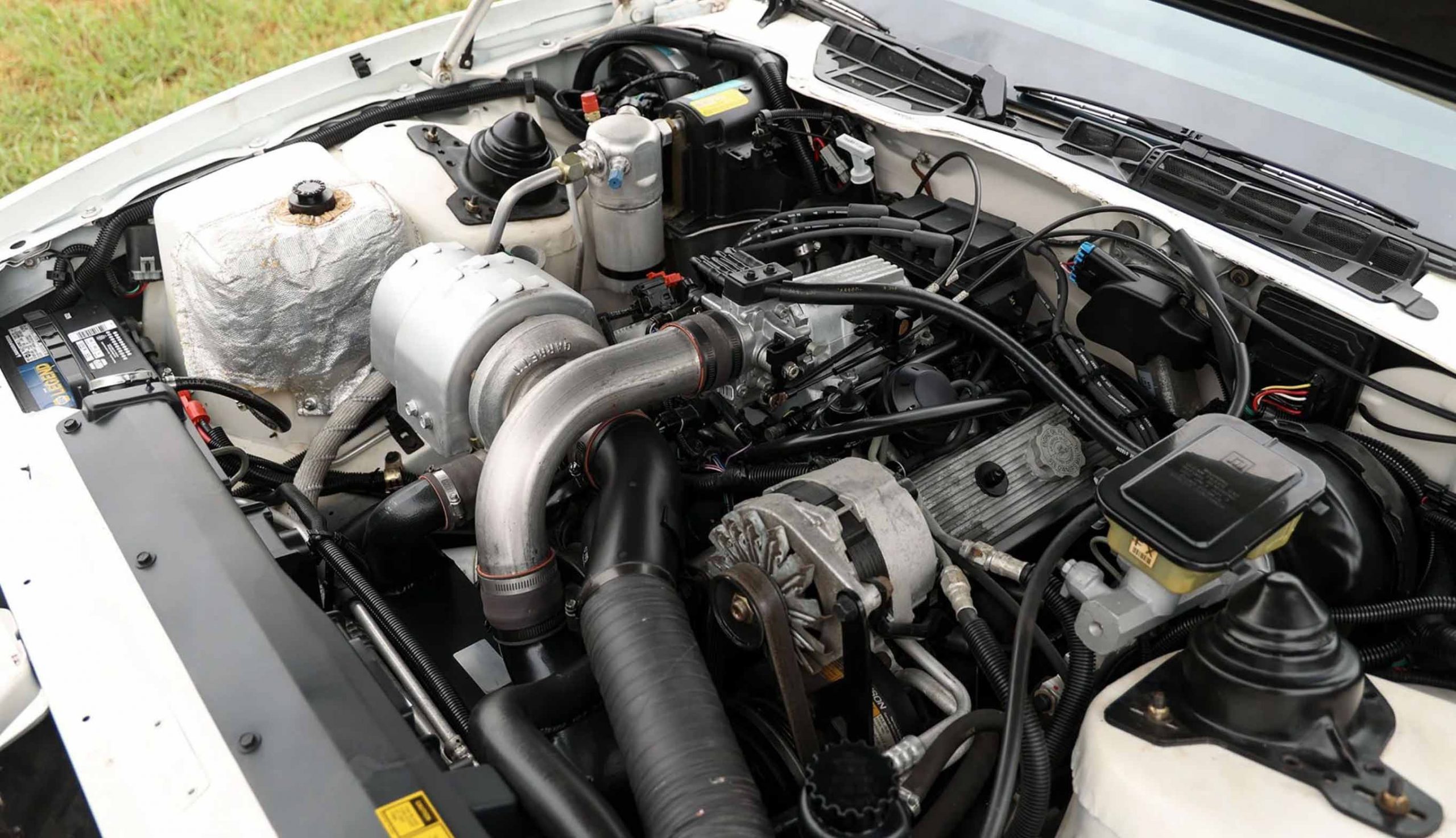
As with the Buick GN, Pontiac quoted “250” for the engine’s output, a figure that most found as believable as the balloon boy hoax. Most media outlets estimated the turbo to be making at least 300 horsepower.
As Car and Driver noted, this turbocharged Trans Am would have been a disappointment had it been slower than the big Buick coupe that the engine originally came from. That turned out not to be a problem. The magazine was able to rip a 4.6 second zero-to-sixty time form the 20th Anniversary car, making it 0.3 quicker than the last GNX they ran. The Trans-Am was the fastest production car they had tested that year and, in their opinion, likely the quickest street-legal production car that any amount of money could buy in 1989. Maybe the fact that few people knew that (and it was a very limited edition) was the way Pontiac got around GM executives by violating the unwritten but well-known rule of no car being faster than a certain Chevrolet two-seater? Whatever the case might have been, this thing was a monster.
With the turbo’s output, the Trans Am had to make do with a four-speed automatic transmission to handle the power. Still, the chassis was far, far more capable than the Regal’s, and meant that the 124-mile-per-hour speed limiter that GM put on the rickety old Grand National was deemed unnecessary. You’d get to 130 mph in just over 30 seconds and not run out of steam until you hit 153 (some sources quote over 160 mph). That chassis, live rear axle and all, offered tremendous grip and was good for .94g on the skidpad – if the road was billiard-table-smooth, that is. Remember, no Firebird ever really had a clue how to handle rough pavement like a European car.
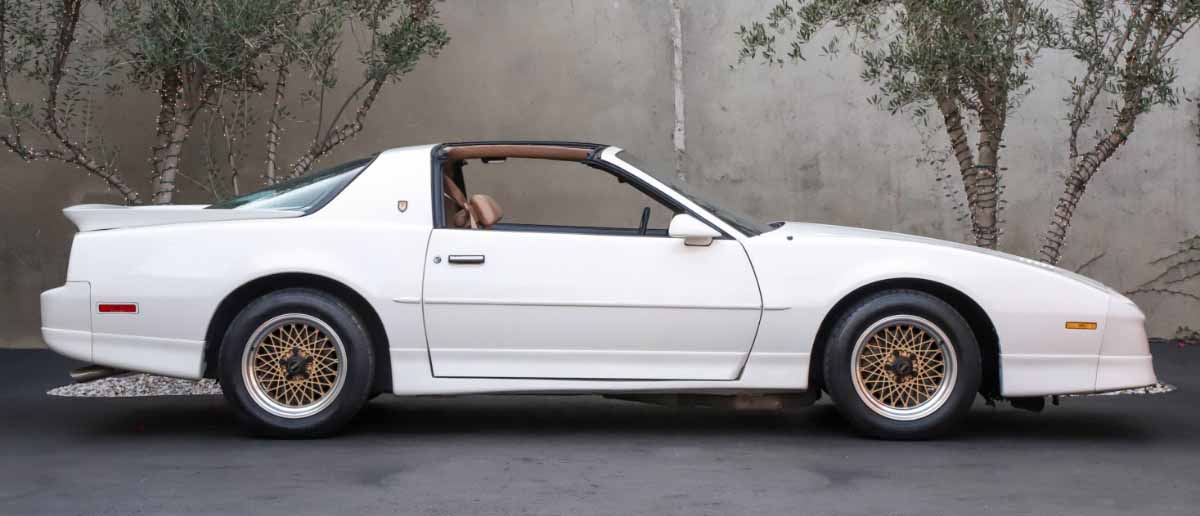
Indeed, if you weren’t driving the thing like a maniac and just cruising, you might miss certain aspects of the old Buick. The Grand National had stiffer springs and bigger rubber than a stock Regal and would never ride like Aunt Katie’s car, but it was still a far more comfortable and spacious place to be in than an F-body coupe. Also, even in diesel-powered GM mid-sizers, that old body-on-frame construction isolated out almost any presence of the engine, so that high-strung turbo V6’s antics were a distant distraction in the old GN. That wasn’t the case with the unibody Firebird; you’d get textbook examples of noise, vibration, and harshness even at idle. That was in addition to the classic GM F-body rattles, squeaks, groans of the structure, and, well, you’ve driven or owned an old Camaro or Firebird, right? The T-tops only made things worse.
Still, if you wanted Acura NSX-like refinement, then the Trans Am was never the sports machine for you in the first place. Attitude combined with unmatched straight-line oomph and, on the right surfaces, ear-bleed grip? If that’s your jam, here’s your car.
Like A Late Eighties Performance Car Super Group
Pontiac made a total of 1,555 1989 20th Anniversary Trans Ams, including three convertibles and 40 desirable hardtops that lacked the structurally-compromising T-tops; it’s truly the last footnote in the Buick Turbo motor story and the final appearance of that legendary motor. As a new car, the 20th Anniversary TA cost nearly $9,000 more than the most expensive “normal” Trans Am, with an asking price of $31,223. That wasn’t cheap, but considering the exclusivity and that no Ferrari or Lamborghini of the day could beat it in a straight line, that $31K might have been money well spent by those who quickly snapped up all the examples.
Late malaise-era or early Radwood era cars are finally getting the respect that they deserve. With GenXers becoming (hopefully) richer with age and wanting to buy products of their youth and not their boomer dad’s generation, cars like this are unquestionable up-and-comers in the collector car world. The 20th Anniversary T/A is infinitely more capable than any sixties muscle car, looks fantastic, and should have much more potential for appreciation.
Based on current market values, it would seem to be a great investment. Today, the examples recently sold on Bring A Trailer have averaged a sell price of $36,780. A 179-mile, in-the-wrapping example recently went for $82,000 on Bring A Trailer; considering that even bottom-of-the-barrel cars like a Chevette with 5,000 miles can command $20,000 today, those Anniversary Trans Am prices seem criminally low. What’s more interesting is that during this same time period, more-plentiful Buick Grand Nationals on Bring A Trailer have had average selling prices as much as 58 percent higher! This rare ‘Bird was the quickest car money could buy in its day with one of GM’s most notorious motors ever, so to see them going now for the price of a new compact SUV is just alarming.
Maybe I should just shut up and keep the secret so you can buy one while it’s still a relative bargain.
Pontiac Points: 97 out of 100
Verdict: Forget the Grand National. Thirty-five years on, the greatest muscle car you never knew existed is still hiding in plain sight.

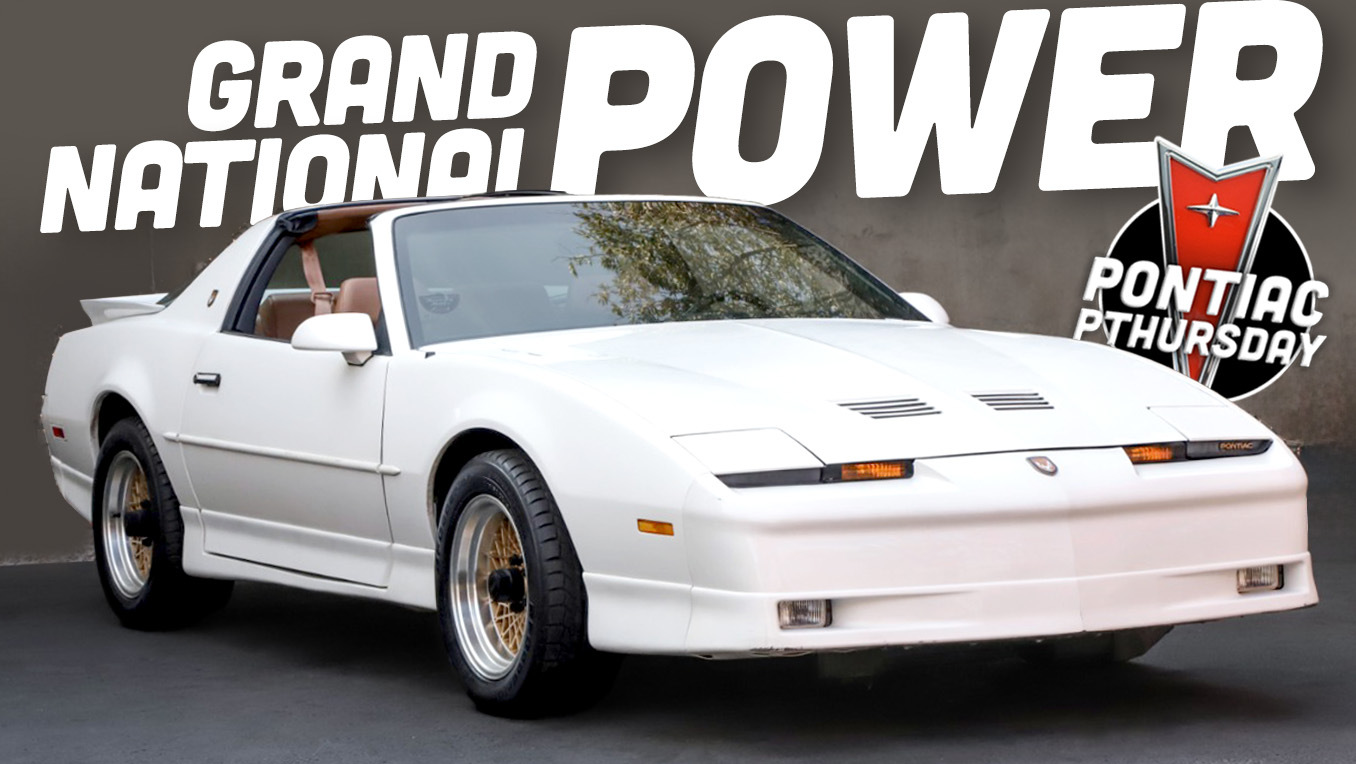







I always wanted a Grand National. The closest I ever got was my very first car, an 84 Regal 2 door with the 3.8 and a Landau roof.
The 80-81 decal doesn’t make me think screaming chicken. More like belching chicken.
Among the various GM and Mopar muscle cars in my brother’s fleet is an ’87 Grand National and an ’89 20th Anniversary T/A. The T/A is a hardtop, not the more flexy T-top, with the pace car decal package still in the trunk. When he first got the Grand National back in ’87, I remember us saying that the great 3.8L really needed to be available in a better handling platform. Two years later he was able to fulfill that wish. The 3.8L was lighter-than and more powerful-than the available V8s of that era and made the T/A a truly fun car.
I was going to say the $32k for a Firebird (which is $85k in 2025 dollars) is way too expensive for a Camaro/Firebird, but then I remembered Ford is charging $325k for the GTD. So, maybe not.
RIP Sam Kinison, You did have a cool car to ride off in.
These were bad ass. More like 260- 280 at rear wheel. So 300-330 flywheel. Cool weather 1/4mi times low as mid 13s smoking the Corvette. Trap speeds always tell the story of real horsepower despite 0-60 nonsense. Car is so good looking to boot.
I wish the S10/S15 twins would have received the 3.8 instead of the base V6 (2.8). In addition to the 2.8 being a dog, the 3.8 could have allowed for additional turbo’ed sport truck versions other than the Syclone.
Ive joked to a few that if a 3.8 was put into an awd s10, and either turboed or supercharged, itd be a nasty lil street machine.
The buicks seem to hold more power than the 4.3 stock could.
I knew these existed, but I don’t recall ever seeing one. Had friends with Formulas and a GTA, so we were always looking out. Then again, I probably did see some, but missed them if they didn’t have the goofy decals.
That 3.8L turbo V6 was a great engine. I don’t understand why GM couldn’t find a good use for it well into the 1990s.
The supercharged 3.8L V6 that followed it was arguably inferior.
Granted they would have had to update it to make it fit into a transverse FWD engine bay, but with the 3.8 being a very compact engine to begin with, I’m sure it could have been done.
Going with your “what if”… I’d like to imagine that engine being available in the 4th Gen Firebird, and maybe the B-Bodies too, for fun
I always loved the look of the GTAs and the later 3rd gens. The proportions just work.
After driving a Buick with the 3800 Series II I reached the conclusion that a V6 powered 3rd generation F body made a lot of sense. The shorter and lighter engine gives much better weight distribution and a plain 2003 3800 had 200 hp and supercharged and turbo versions would give 250-300hp . There’s the image issue of not having a V8, but leaving a 350 powered car off the line makes up for it
I grew up in the 80s and was a wee gearhead, and I totally did not remember that Pontiac did this.
I’m surprised that given the engine and pedigree this car is overlooked. I think it has to do with the fact that the GN/GNXs are absolute drag strip legends with owners turning them into 1000+hp beasts- given the tight engine bay and limited space for huge tires out back, you can’t really do that to this.
The crazy thing is, the LS-powered 4th-gen Firebirds and Holden-derivatives couldn’t beat this to 60, so this is the quickest factory Pontiac ever.
The G8 GXP with the manual could do 4.5, so technically it was the fastest
https://www.motortrend.com/reviews/2009-pontiac-g8-gxp-first-test
That thing was seriously fast (and seriously expensive) for 1989. Impressive stuff.
I have owned a ’91 Camaro with a hardtop and an ’89 Firebird with t-tops and I can confirm that the t-tops compromise things significantly. If I did an F-body again (and I do really, really like them), it would have to be without t-tops. Not only can you feel the body flex and the whole car flop around more, but if you don’t put them on just right you get a puddle in one of your seats when it rains.
This only applies to the 3rd gen, by the way. I had a 4th gen Trans Am and the t-tops never leaked. It only took an entire decade to figure out t-top technology before it vanished for good.
I paid a lot of money to a company that called themselves Water Doctors and replaced the seals with new GM seals… and they still leaked. And do to this day. If I go to the car wash I bring extra towels and I know exactly where to place them.
I autocrossed the car for six years. Before I started I asked a veteran if I should take the tops out, and his answer is you might was well or the car will take them out for you.
I dunno about this. The 3rd-gen F-bodies were pretty atrocious in terms of build quality and materials choice. The 1978+ A-bodies were designed and engineered when GM was at it’s peak. Can a Firebird out-handle an A/G-body? probably, in stock form, but there are all sorts of suspension/chassis/brake tweaks available in the aftermarket to solve those problems.
All else being equal, I think I’d prefer a GN with a few tweaks (or a GNX) over a creaky and cheap-feeling Firebird.
I mean if you apply the same chassis mods to a 3rd-gen you’ll end up with a track star, so it’s probably fair to compare apples to apples.
Personally the interior materials of a 3rd-gen are superior to the plasticky 4th-gens, even though I’d like one of those also eventually to complete the set.
As someone quite familiar with both, I agree. The G bodies were really decent cars for their time and nice cruisers today with a more solid, grown up feel to the build quality. F-bodies were quicker and better handling, but that doesn’t matter today as a modern Camry can beat them. And if you wanted to spend ridiculous money, they sell entire upgraded replacement frames and suspension subframes for Gs.
Appreciate your feedback but the third GEN F body with not a lot of money is an absolute beast for drag or track.
And as a bonus with all the giant body gaps, they don’t bend any sheet metal lol
Look at those panel gaps.
Woof.
they build excitement!
” … and, well, you’ve driven or owned an old Camaro or Firebird, right?”
Funny you should mention that, I just drove my ’89 Formula yesterday.
“The rear seatback folded down to give extra cargo space, but the third-generation F-body design with the protruding “box” for the axle meant you’d end up with a sort of mountain-range-looking area …”
That’s where the gas tank is. Right over the rear axle. Which means, if you need to change the fuel pump, you get to drop the rear axle. And the exhaust. Fun times.
“Pontiac made a total of 1,555 1989 20th Anniversary Trans Ams, including three convertibles and 40 desirable hardtops …”
Are we sure about the convertibles being a factory job? Factory third-gen convertibles didn’t arrive until the facelifted ’91’s. In any case, a small number of these were also made with cloth seats (which might have been a delete option). I’m not sure how much crossover there was between cloth and hardtop but that to me would seem to be the rarest of the rare.
Still want one of these.
Precisely why many people (carefully) cut the access hole and do the fuel pump from the top.
Ideally, just don’t run the tank down to 1/4 tank and the fuel pump shouldn’t chew itself to death like my ’86 IROC’s did. When I removed the fuel filter, the gas coming from the tank was silver.
I’m pretty sure ethanol got the fuel pump, like it did on the Ducati before it (and now again, and probably in the Yugo as well… grrr)
Hello fellow 89 Formula owner. Yeah on the gas tank that is why when I did the 9inch swap on mine I just did a newer and high flow fuel pump then did not feel like doing the “access hole” like other do my car has been chopped up enough with the swaps haha. Wish I was driving my yesterday (or any day recently) still need to fix my damn exhaust hah.
Hell yeah, brother
I thought these shared the engine with the GNX, not the less powerful Grand National, minus a change in cylinder heads due to space restrictions. I didn’t see that distinction in this article.
These Pontiacs used the FWD version of the 3.8 heads, which, actually flowed better vs. the RWD 3.8 heads used in the GN/GNX.
Yep, I have seen more than a few go by for sale for a pittance back in the 90’s. These days they are not cheap if found for sale, but I would still take one over the GNX. I still say they should have removed all unnecessary and heavy items from a base TA to make up for the cost delta and continued with this engine in the Formula Fireturds of the day. This would have definitely differentiated the Ponchos from the Camaros, and it could have left the TA’s a V8 for those not yet into a hot V6 option. Of course the best of the v8’s of the day would have been shamed for being so slow as the reduced content would have also made these lightly most likely and with closer to 300 hp on tap, it would have made for a pretty wicked track car. I think in the 80’s those TA’s were pretty slippery on the Drag coefficient too, so they might have also seen plenty of Bonnevile runs stock.
0.29 Cd
Love these turbo trans am’s I remember when I was in highschool you could get these for under 20k nowadays good luck with that. I remember seeing one when I went to s turd gen meet and they had a Dyno there (I had my car dyno’ed but they was way before what the car is today) but I remember hearing the turbo trans am and that that turbo 3.8 when it was on the Dyno and it sounded just like a V8 such a sweet engine and I love that GM pretty much lied about the power ratings so people who bought the 350s did not feel bad haha.
Would love to own one of these some days if I am ever rich hah. Though I would prefer if it was the same red as my bird hah.